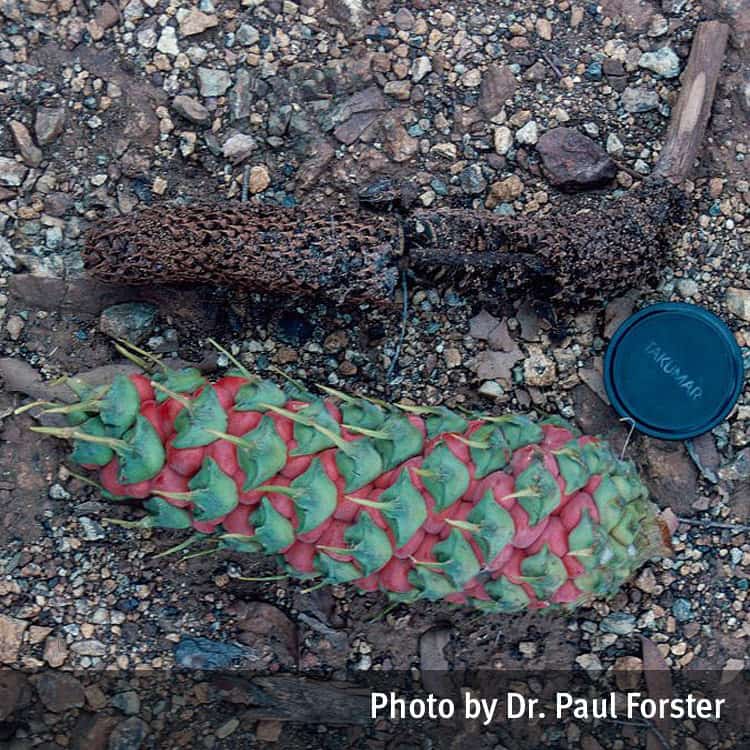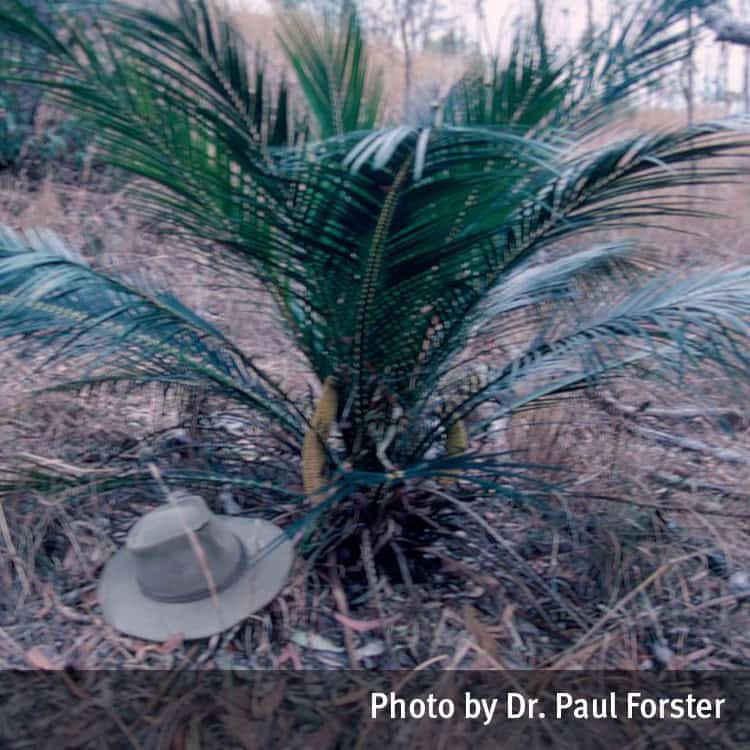Seek urgent medical attention for all ingestions.
Description
Palm-like plants to 1m high with a crown of large leathery leaves.
The cones are the reproductive part of the plant.
The leaves are 50-80cm long and 30-40cm wide, with numerous leaflets that have no obvious midrib.
Toxicity
Symptoms
If eaten, the raw fruit may cause headache and severe gastro-intestinal irritation including stomach cramps, nausea, vomiting and diarrhoea. In a very few severe cases, liver damage, coma and death have been reported. The male cone has a fruity odour when releasing pollen and this has been recorded as causing respiratory distress.
Images


Details
Common name: Zamia
Botanical name: Macrozamia species, most commonly M.miquelii, M.macleayi, M.lucida, M.communis
Other common names: Zamia palm, Wild pineapple
Family: Zamiaceae
General description: Palm-like plants to 1m high with a crown of large leathery leaves.
Flowers: The cones are the reproductive part of the plant.
Leaves: The leaves are 50-80cm long and 30-40cm wide, with numerous leaflets that have no obvious midrib.
Fruit/Berries: The fruiting cones are similar in appearance to an elongated pineapple, with large round to oblong seeds up to 4cm long and 2.5cm across, red, orange or yellow.
Other: The sap is clear.
Last updated: July 2023